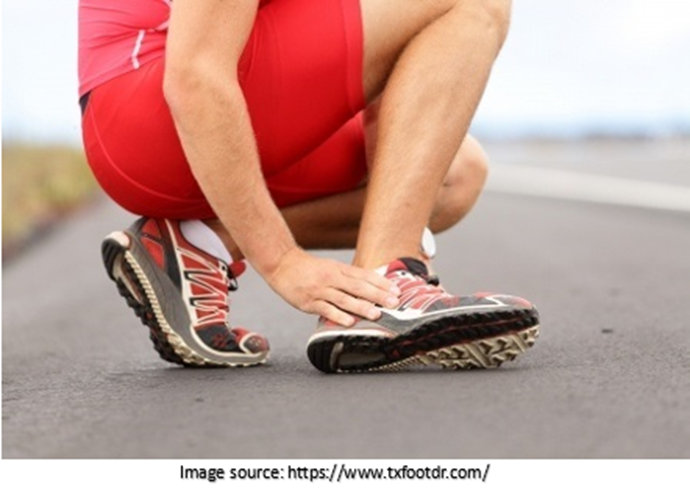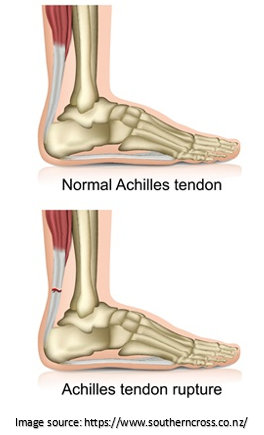The Achilles tendon, named after the legendary Greek warrior Achilles, is one of the most important structures in the human body. It connects the calf muscles to the heel bone and plays a vital role in everyday activities such as walking, running, and jumping.

However, this strong tendon is also susceptible to injuries and tears, which can significantly impact a person’s mobility and quality of life. Achilles tendon surgery becomes a viable solution to repair and restore functionality in such cases.
Dr. Leena Jain is a highly skilled hand and plastic surgeon in Bandra, Mumbai specializing in tendon repair surgery, mainly Achilles tendon repair. With years of expertise in the field, Dr. Jain has helped several patients regain mobility and improve their quality of life. She practices in Bandra and Borivali, providing compassionate care and utilizing the latest surgical techniques to deliver optimal results.
In this blog, we will explore the anatomy and function of the Achilles tendon, the diagnosis of injuries, various surgical techniques, post-operative care, and long-term prevention methods.
First, let’s see,

Anatomy and Function of the Achilles Tendon
The Achilles tendon, the body’s strongest and largest tendon, is a robust band of fibrous tissue that joins the calf muscles to the heel bone. It runs around the back of the ankle, originates from the calf muscles, namely the gastrocnemius and soleus muscles, and inserts into the heel bone (calcaneus).
The Achilles tendon allows us to perform activities such as walking, running, and jumping by enabling the calf muscles to exert force on the foot. Its crucial role in movement makes its repair essential after an injury or rupture.
Diagnosis of Achilles Tendon Damage
Dr. Leena Jain, a proficient plastic reconstructive microsurgeon and hand surgeon in Mumbai, records the patient’s medical history, performs physical tests and may recommend imaging tests to diagnose Achilles tendon damage.
Here are the key steps in diagnosing Achilles tendon damage:
1. Medical History:
The doctor will inquire about your symptoms, any previous injuries or medical conditions, and activities that may have contributed to the injury.
2. Physical Examination:
The doctor will perform a thorough physical examination. It may involve palpating the Achilles tendon, assessing the range of motion, strength testing, and observing for any visible signs of injury or swelling.
3. Diagnostic Imaging:

Doctors may order imaging tests such as ultrasound or MRI to confirm the diagnosis and assess the extent of the tendon damage. These imaging techniques provide detailed images of the Achilles tendon, allowing for accurate assessment of tears, inflammation, or other abnormalities.
Based on the findings from these diagnostic procedures, the doctor will determine the severity and location of the Achilles tendon damage and recommend an appropriate treatment plan, which includes surgical intervention.
Let’s look at the,

Different Techniques for Achilles Tendon Repair
Achilles tendon surgery aims to repair the torn or damaged tendon, restoring its strength and functionality. The specific type of Achilles tendon rupture surgery is performed based on the particular nature and severity of the injury.
The two primary surgical techniques for Achilles tendon repair are:
1. Open Direct Repair:
This is the traditional surgical approach where the surgeon makes a single large incision along the back of the ankle to access the damaged Achilles tendon.
Then, the surgeon sutures the torn ends of the tendon back together, restoring its continuity. Open repair allows for direct visualization and precise repair of the tendon.

2. Open repair with tendon graft
It there is partial loss of tendon, then tendon graft is placed to establish tendon continuity. Ko Muscle fascia turn over can also be done to form the tendon.
3. Open Repair with flap cover
When overlying skin is damaged, it needs a cover in the form of flap to cover the tendon and facilitate it’s healing.
Flaps can be taken from surrounding ankle area or from thigh depending on tissue loss.
This will be discussed in detail once the patient is examined
Recovery After Achilles Tendon Repair
Recovering from Achilles tendon surgery is crucial for achieving optimal outcomes. The duration and progression of recovery vary depending on factors such as the surgical technique used, the extent of the injury, and the individual’s overall health.
Here is a general overview of the recovery process:
| Recovery Phase | Key Milestones |
| 3 weeks after Achilles tendon surgery | Immobilization, pain management, wound care |
| 4 weeks after Achilles tendon surgery | Gentle stretching, physical therapy, range-of-motion exercises |
| 3 months after Achilles tendon surgery | Gradual weight-bearing, strengthening exercises, intense physical therapy |
| 4 months after Achilles tendon surgery | Resume all activities and increased mobility |
Post-operative Care
After Achilles tendon surgery, following specific guidelines for optimal healing is crucial. These may include:
1. Immobilization:
Wearing a cast, splint, or boot to protect and support the repaired tendon.
2. Medications:
Taking prescribed pain and anti-inflammatory drugs to manage discomfort and reduce swelling.
3. Physical Therapy:
Engaging in a tailored rehabilitation program to restore flexibility, strength, and range of motion.
4. Gradual Return to Activity:
Following the doctor’s instructions on when and how to resume activities, such as walking and exercising.
Let’s discuss,
Long-term Prevention Methods
It is essential to adopt long-term preventive measures to minimize the risk.
Frequently Asked Questions
Q: Do tendons grow back together after Achilles surgery?
A: Achilles surgery aims to reattach the tendon ends and promote healing. Through the surgical procedure, the surgeon aligns the torn ends and sutures them together. Over time, new tissue forms, allowing the tendon to heal and regain its strength.
Q: How long does it take to recover?
A: The recovery time varies depending on the individual and the extent of the injury. Generally, it takes approximately 3-4 months to recover from Achilles tendon surgery fully.
Q: Will I need to wear a cast or walking boot after Achilles’ reconstruction?
A: In the early stages of recovery, you will likely need to wear a cast, splint, or walking boot to immobilize the repaired tendon and promote healing. Your surgeon will determine the specific duration of immobilization which may vary based on the surgical technique used.
Q: How long does it take to walk after Achilles torn surgery?
A: The timeline for walking after Achilles tendon surgery varies, and it depends on several factors, including the surgical technique used and the patient’s healing progress.
Typically, patients begin weight-bearing exercises with the aid of crutches or a walking boot around three weeks after surgery. However, the ability to walk without assistance may take several weeks to a few months, depending on the individual’s healing process and the guidance of their healthcare professional.
Q: Are there any risks or complications associated with surgery?
A: As with any surgical procedure, there are potential risks and complications. These can include infection, blood clots, wound healing problems and risk of re-rupture. It is essential to discuss these risks with your surgeon before the procedure and follow their post-operative care instructions to minimize the chances of complications.

